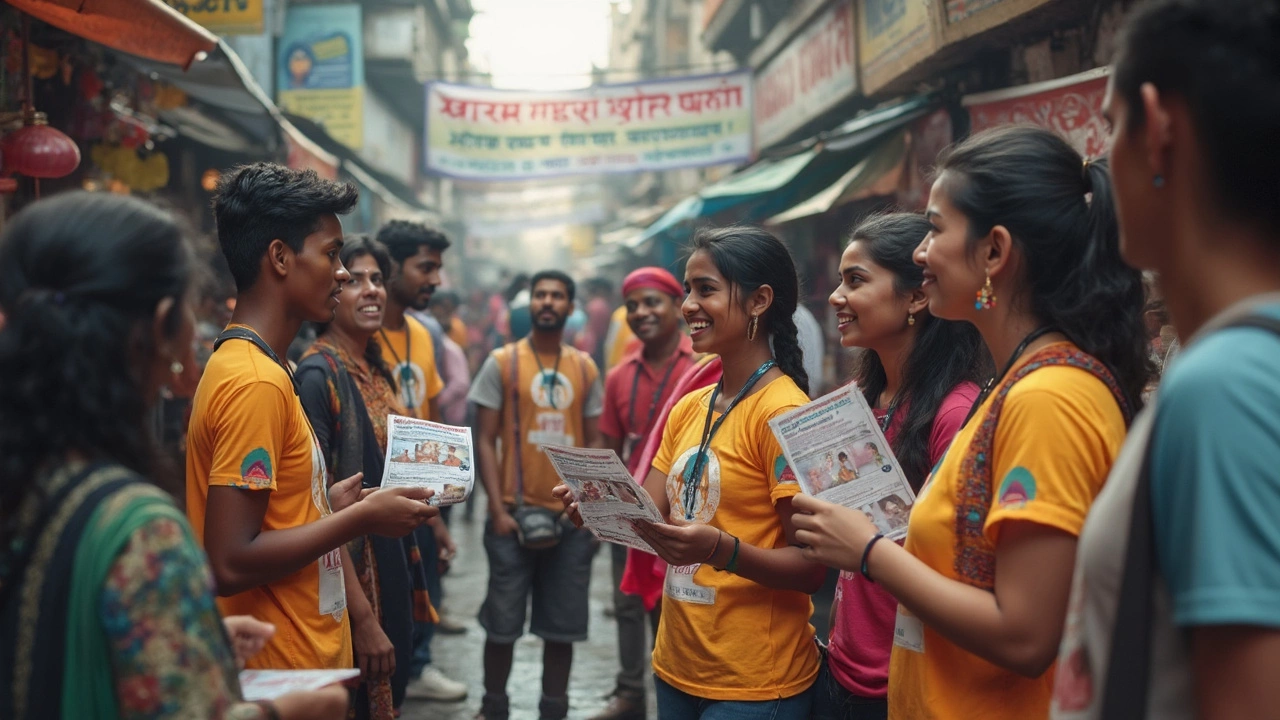How to Plan an Outreach Activity: Simple Steps for Real Impact
 May, 12 2025
May, 12 2025
Planning an outreach activity sounds easy until you actually start. It isn’t just picking a date and showing up. You need to know exactly what you want to achieve or you’ll end up spinning your wheels and wasting everyone’s time.
One of the biggest mistakes? Skipping the goal-setting part. If you don’t set a clear, concrete goal—like signing up 30 new members, handing out 300 flyers, or connecting with 15 local businesses—you can’t really tell if your outreach worked. Vague goals like “raise awareness” usually get forgotten fast and don’t give people something real to focus on.
Start with one question: What do you want to happen as a direct result of this activity? Write that down. Now you’re ready to actually plan something that makes sense.
Set a Clear Goal
If you ask anyone experienced in outreach planning, they'll tell you: a clear, specific goal is the backbone of any successful activity. Winging it doesn’t cut it—people lose focus, and you can’t measure success if you don’t know what you’re aiming for in the first place.
Here’s the deal: broad goals like “get more people involved” don’t help much. Instead, nail down what “success” looks like. Make it something you can actually measure. Want more volunteers? How many? If your goal is awareness—how will you prove people are actually aware now?
Some examples of clear goals for community outreach:
- Sign up 50 new volunteers during a weekend event.
- Distribute 400 safety kits to local families within two weeks.
- Collect 200 survey responses to understand neighborhood needs.
Using the "SMART" framework—Specific, Measurable, Achievable, Relevant, Time-bound—can help big time. Here's how that breaks down for outreach activities:
| SMART Element | Practical Question |
|---|---|
| Specific | What exactly do we want to achieve? |
| Measurable | How will we know we've reached it? |
| Achievable | Can we do this with our current people and resources? |
| Relevant | Does this match our mission or the needs of our audience? |
| Time-bound | By when do we want this done? |
Don’t be afraid to get specific—if your target is to get every apartment in a block to register for emergency texts, don’t settle for “increase signups.” You’ll have a better shot at staying motivated, keeping your team on track, and actually making an impact.
Know Who You're Reaching
If you don’t know who you’re trying to reach, your outreach planning is shooting in the dark. Outreach flops when you aim too broad or just guess who will care. Start by picking a specific group. Are you reaching seniors, parents with young kids, local business owners, or maybe teens in the neighborhood?
Research shows that tailored outreach is up to 70% more effective than generic messages. If you want your flyers, social posts, or events to land, you need to speak your audience’s language. For example, teens care about digital channels and face-to-face might flop, while older adults prefer personal calls or flyers they can hold.
Try answering these questions:
- Who exactly do I want to show up, enroll, or get involved?
- Where do these people spend time? (Online, at local hangouts, at work?)
- What gets their attention? (Free food, childcare, useful info, social proof?)
The more specific you get, the easier your messaging becomes. If you’re stuck, talk to a couple of people from your target group. Ask what matters to them and what makes something worth their time.
Here’s a snapshot of how different groups prefer to get information based on a 2023 community engagement study:
| Audience | Preferred Method |
|---|---|
| Teens (13–19) | Text, Instagram, TikTok, school visits |
| Young Adults (20–35) | WhatsApp, Instagram, emails |
| Parents | Facebook, WhatsApp, school flyers |
| Older Adults (60+) | Phone calls, printed flyers, church/community centers |
Don’t waste time blasting your message everywhere. Focus where your people actually pay attention. Once you nail who you’re reaching, the rest of your planning will fall into place so much easier.

Organize Your Team and Tools
Trying to run an outreach activity solo is like showing up to a group project at school and realizing everyone else bailed. Things just fall apart. Building the right team is half the battle. Pick people you trust to show up, follow instructions, and actually care about the project, not just the free snacks. If you need volunteers, ask early and be specific about what you need—don't just say, “Help wanted.” Say, “Need 2 people to handle sign-ins, someone to manage the tables, and one person to take photos.” This way, nobody’s confused about their role.
Don’t skip the tools, either. Make a checklist of what you actually need for the day. This usually includes stuff like sign-in sheets, flyers, handouts, markers, tape, first-aid kit, snacks, and maybe even a portable speaker if you’re dealing with crowds. You’d be surprised how many people forget basic things. A recent survey by Nonprofit Tech for Good found that 37% of community events fail to provide even basic tech, like chargers or backup tablets, which can slow everything down.
Everyone on your team should know how to use the tools you’re bringing. Have a quick practice or meeting, and walk through the plan. There’s no point in having a digital sign-up station if no one knows how to fix it when it freezes.
If you’re lucky enough to have a big group, break the team up into smaller groups—one for communications, one for logistics, and one for engagement with the community. This keeps things on track so nobody steps on each other’s toes. You can even set up a group chat so you’re not yelling across the room to figure out who’s missing the box of flyers.
"Outreach works best when your team is trained, supported, and confident with the tools they're using. You don’t need a big budget, just a plan and clear roles." – Community organizer Jasmine Gutierrez, from the Outreach Fundamentals Workshop, 2023
Bottom line: get your outreach planning right by making sure your team knows what to do, and you’ve covered the basics for tools and supplies. This way, things run smoother, you look more professional, and you can actually make a difference instead of running around looking for a pen.
Track Results and Learn
You can't just guess if your outreach planning is working—you’ve got to track real numbers. This starts with your goal. Did you sign up those 30 new members you wanted, or hand out 300 flyers? If you didn’t hit your goal, don’t panic. The important thing is knowing where things went off track so you can do better next time.
Let’s get specific. Use a simple tracking sheet on a phone or laptop. Log every conversation, sign-up, flyer, and even notes on what worked (or crashed and burned). After the event, sit down with your team and look at the numbers together. Was the turnout higher when you gave out snacks? Did social media get more clicks than old-school posters?
- Ask people how they heard about you. Was it the Facebook post or a friend’s text?
- Mark down when people seemed most interested—was it early in the morning or late in the afternoon?
- Pay attention to anything you ran out of (flyers, snacks, patience—kidding, sort of). That matters for next time.
Here’s something wild: According to the Community Tool Box project, about 70% of groups who review their results after outreach events end up tweaking their methods and see better results at their next go. Not many people do this, but it’s a game changer.
| What to Track | How to Use It |
|---|---|
| Sign-ups | Shows actual engagement, not just interest. |
| Materials handed out | Helps with planning future budgets and supply amounts. |
| Social media responses | Reveals what messages stuck with the crowd. |
| Peak activity times | Guides future event schedules. |
Once you’ve crunched the numbers, talk about how you could do things better. Maybe you need more volunteers, or maybe the music at the booth was too loud for real talks. No shame—just small fixes that stack up over time.
If you’re serious about outreach, make a habit of reviewing results after every event. It sounds basic, but barely anyone does it consistently, and that’s why most outreach either stays the same or slowly fizzles. Those that do, keep getting better results and stay fired up because they actually see what’s working.